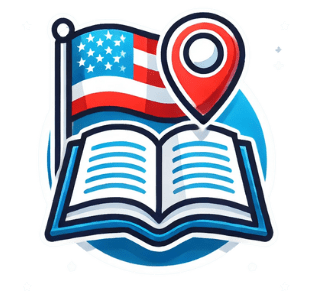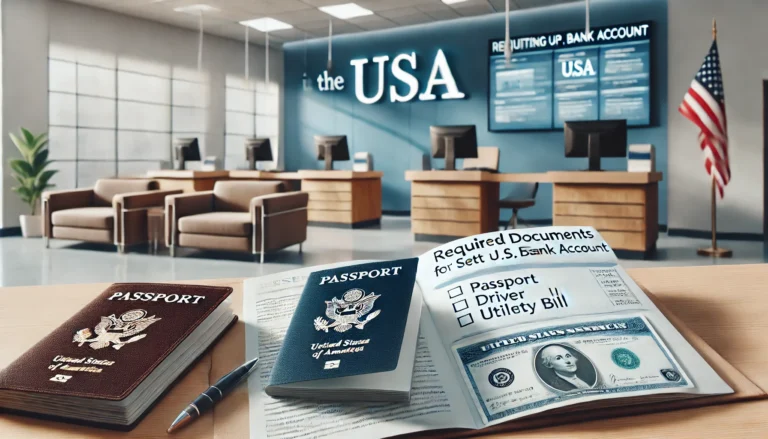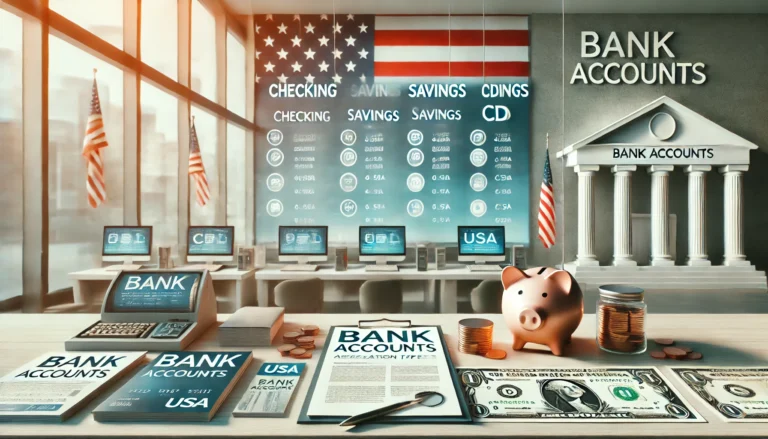Essential Steps to Open a Bank Account in the USA
Opening a bank account in the USA offers significant benefits, from easy money management to convenient financial services. This guide will walk you through the essential steps, required documents, and practical advice for both residents and non-residents. Whether you’re new to the USA or simply looking to establish a new bank account, this guide will help you make informed choices.
Table of Contents
- Why Open a Bank Account in the USA?
- Types of Bank Accounts Available
- Eligibility Requirements for Opening a US Bank Account
- What You Need: Documents and Information
- Step-by-Step Guide to Opening a US Bank Account
- Choosing the Right Bank
- Selecting the Right Account Type
- Preparing Documentation
- Applying In-Person vs. Online
- Opening a Bank Account as a Non-Resident or Foreigner
- Common Account Types: Checking vs. Savings
- Bank Fees and Charges: What to Expect
- Setting Up Online and Mobile Banking
- Understanding Deposit Insurance in the USA (FDIC)
- Tips for Managing Your New Account
- Benefits of Having a US Bank Account
- Potential Challenges and How to Overcome Them
- Switching or Closing a US Bank Account
- Frequently Asked Questions (FAQs)
- Conclusion: Enjoying Your Financial Freedom in the USA
1. Why Open a Bank Account in the USA?
Having a bank account in the United States is more than just a convenience—it’s often a necessity. A US bank account makes it easier to pay bills, receive your paycheck, manage daily expenses, and even build credit. For new residents and non-residents alike, a US bank account can be key to a smooth financial transition.
If you’re new to the USA, you might also want to explore our Comprehensive Guide for New Residents to learn more about financial essentials.
2. Types of Bank Accounts Available
Most US banks offer a range of accounts tailored to meet diverse needs:
- Checking Accounts: Ideal for everyday transactions, paying bills, and making purchases.
- Savings Accounts: A great option if you want to save money and earn interest over time.
- Money Market Accounts: Offering higher interest rates than savings accounts, money market accounts come with limited transaction allowances.
- Certificates of Deposit (CDs): These accounts lock in your money for a set period with a fixed interest rate.
To understand how banking and currency work in the USA, you may also find our Guide on American Currency useful.
3. Eligibility Requirements for Opening a US Bank Account
Eligibility criteria vary from bank to bank, but you’ll generally need to meet a few basic requirements:
- Age: You must be at least 18 years old to open an account independently. Minors can open accounts with a parent or guardian.
- Residency Status: Both residents and non-residents can open accounts, though requirements may differ.
- Identification: A valid photo ID, such as a passport or US driver’s license, is essential.
For non-residents, visa information can play a significant role. Explore our article on Special Visa Requirements for more details.
4. What You Need: Documents and Information
Most banks will ask for the following documents:
- Photo ID: A passport, US driver’s license, or state ID.
- Social Security Number (SSN) or Individual Taxpayer Identification Number (ITIN): An SSN is required for US citizens and residents, while an ITIN can be used by non-residents.
- Proof of Address: A recent utility bill, lease agreement, or other document proving your US address.
If you’re unfamiliar with how to get an SSN, check out our Guide on Getting a Social Security Number in the USA.
5. Step-by-Step Guide to Opening a US Bank Account
Choosing the Right Bank
Consider banks that are easily accessible and offer services that meet your needs, such as online banking, low fees, and branches in your area.
Selecting the Right Account Type
Review your options—whether you need a checking account for daily use or a savings account for emergencies.
Preparing Documentation
Double-check that you have all required documents. It can save you time and ensure a smoother account opening process.
Applying In-Person vs. Online
Many banks now allow you to open accounts online, which can be more convenient if you’re already familiar with the process.
6. Opening a Bank Account as a Non-Resident or Foreigner
Opening a bank account as a non-resident can come with additional steps, such as using an ITIN instead of an SSN. Be sure to check our Visitor’s Guide to the USA Visa Process for more guidance on visa-related requirements.
7. Common Account Types: Checking vs. Savings
| Account Type | Best For | Features |
|---|---|---|
| Checking | Daily transactions | Debit card, checks, online banking |
| Savings | Building savings | Interest on balance, withdrawal limits |
For an in-depth look at managing finances in the USA, check out our article on Managing Your Finances in the USA.
8. Bank Fees and Charges: What to Expect
US banks commonly charge fees for various services, such as:
- Monthly Maintenance Fees: Some banks waive this fee if you meet specific balance or deposit requirements.
- ATM Fees: Using an out-of-network ATM can incur extra charges.
- Overdraft Fees: Charged when you spend more than your account balance.
Understanding these fees can help you save. Also, look into the Cost of Living in Major US Cities to plan your expenses better.
9. Setting Up Online and Mobile Banking
Most banks offer easy-to-use mobile apps and online portals for account management, transfers, and bill payments.
10. Understanding Deposit Insurance in the USA (FDIC)
In the USA, the Federal Deposit Insurance Corporation (FDIC) insures deposits up to $250,000 per depositor, protecting your money in case of a bank failure.
11. Tips for Managing Your New Account
Setting up notifications for low balances, budgeting your spending, and monitoring transactions can help you keep your finances in check. If you’re new to renting, check out our Apartment Rental Guide for budgeting tips.
12. Benefits of Having a US Bank Account
A US bank account not only simplifies transactions but also provides safety, credit-building opportunities, and better control over expenses. You may also enjoy discounts on travel, which you can explore in our Traveling on a Budget Guide.
13. Potential Challenges and How to Overcome Them
While the process of opening a bank account in the USA is straightforward, there are some potential challenges you might face:
- Unfamiliar Banking Terms: Terms like “overdraft protection” or “minimum balance” may be confusing at first. Be sure to ask questions if any banking terms aren’t clear.
- Cultural Adjustments: The US banking system might differ from your home country. Familiarizing yourself with common practices, such as account fees and tipping culture, can ease the transition. For more, see our article on Cultural Etiquette for Visitors.
Most banks have helpful customer service representatives who can explain account terms, fees, and mobile app features, making it easier to navigate your options.
14. Switching or Closing a US Bank Account
Switching or closing your bank account is a fairly simple process, but it’s essential to follow a few key steps to avoid fees:
- Transfer Automatic Payments: Before closing, transfer any automatic bill payments or direct deposits to a new account to avoid service interruptions.
- Withdraw Remaining Funds: Ensure all funds are withdrawn or transferred to another account before closing.
- Close the Account with a Bank Representative: Confirm the account is officially closed to avoid future charges.
If you’re considering a new bank due to financing needs, our Guide to Purchasing a Car in the USA has additional tips on managing banking for big purchases.
15. Frequently Asked Questions (FAQs)
Here are answers to some common questions about opening a bank account in the USA:
- Can a non-resident open a bank account in the USA?
Yes, many banks allow non-residents to open accounts with appropriate identification and documentation, like an ITIN. - What’s the minimum amount needed to open a bank account?
This varies by bank, but it typically ranges from $0 to $100 for basic accounts. - How long does it take to open a bank account in the USA?
Opening an account usually takes about 30-60 minutes, depending on whether you’re applying in-person or online. - Do I need a Social Security Number (SSN) to open an account?
An SSN is required for residents, but non-residents can usually use an ITIN instead. For more information on obtaining an SSN, check out our guide on Getting a Social Security Number in the USA. - Are online bank accounts safe?
Yes, most major banks offer secure online and mobile banking options with encryption and other security features. - How do I avoid bank fees?
Choosing a bank with low-fee or no-fee accounts, maintaining a minimum balance, and using in-network ATMs are effective ways to avoid fees. - What should I do if I lose my bank card?
Contact your bank immediately to report the lost card and request a replacement. Many banks can issue a temporary virtual card until your new one arrives.
16. Conclusion: Enjoying Your Financial Freedom in the USA
Opening a bank account in the USA is a practical step toward establishing financial independence and security. With the right bank account, you’ll be able to manage your finances efficiently, save for the future, and enjoy the convenience of online banking. By understanding the requirements, preparing your documents, and choosing the right bank, you can make this process quick and hassle-free.
Remember, with a bit of preparation, the process of opening a bank account becomes much easier and will empower you as you navigate life in the United States. Whether you’re here temporarily or settling in long-term, having a US bank account will be an invaluable tool on your journey.





